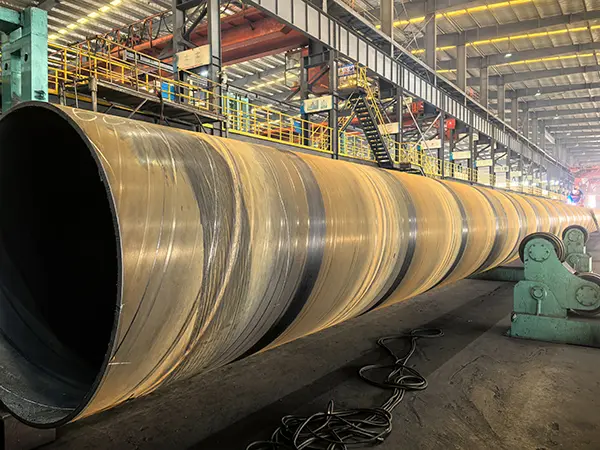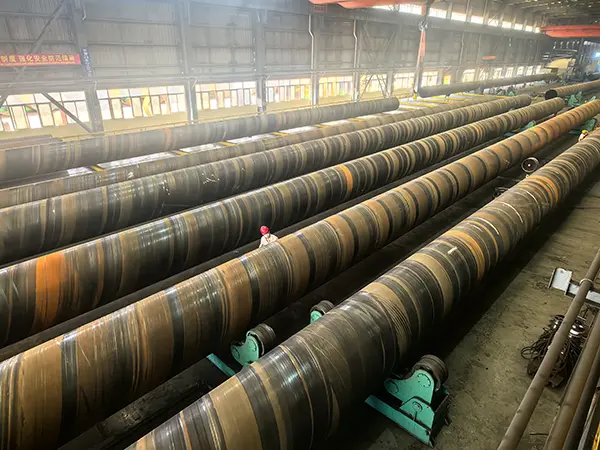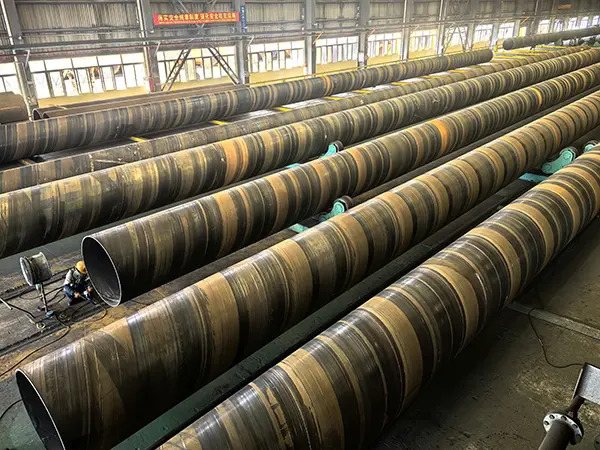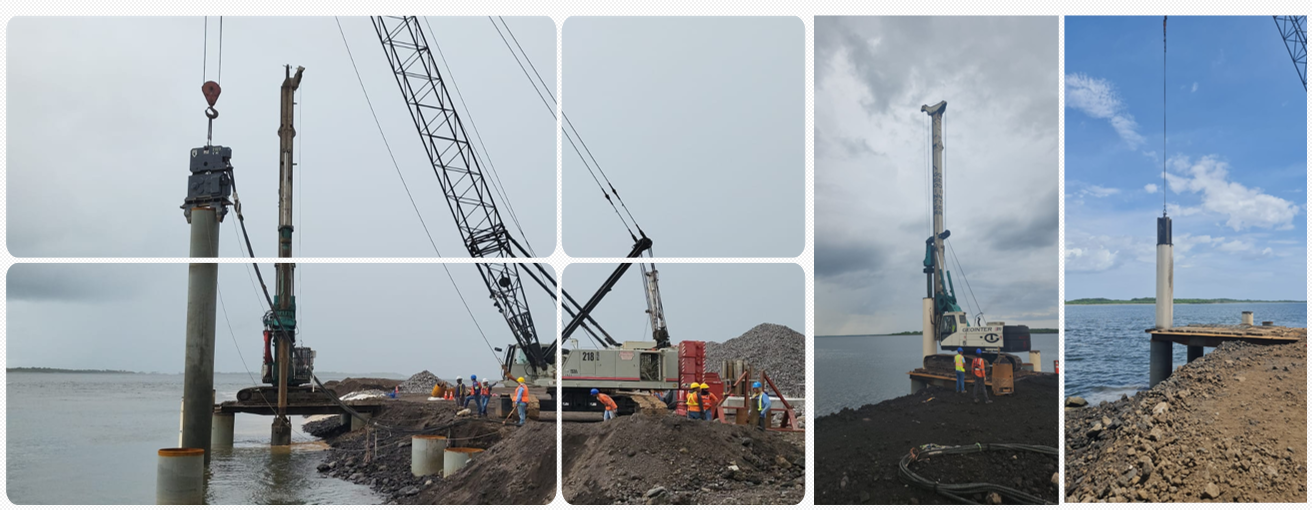Sharing China-Made with Global Customers

You need strong, large-diameter pipes for your project but feel uncertain about their quality. A bad supplier choice can lead to major delays and budget issues, risking your reputation.
The SSAW (Spiral Submerged Arc Welded) pipe production process involves uncoiling a hot-rolled steel strip and forming it into a spiral shape. It is then welded from both the inside and outside using the submerged arc welding technique. This method creates strong, cost-effective pipes for many applications.

The process seems straightforward on the surface. However, each step is critical to ensure the final pipe meets the strict standards required for demanding projects, like those in the construction or oil and gas sectors. As a supplier with decades of experience since 1996, we at Centerway Steel have refined every part of this process. It's not just about making a pipe; it's about delivering reliability. Let's walk through each stage, so you know exactly what to look for when sourcing your next batch of SSAW pipes.
You need to be sure the steel itself is perfect from the start. Any defects in the raw material will create a weak pipe, which is a huge risk for your project.
Raw material preparation begins with selecting high-quality hot-rolled steel coils. These coils are unrolled and flattened. The edges are then precisely milled to create the correct bevel for a perfect weld joint. This step is absolutely essential for ensuring a strong, full-penetration weld later on.

This first stage is where quality control really begins. We don't just take any steel coil. We carefully inspect each one for any surface defects, and we verify its chemical composition and mechanical properties against the project specifications. For a purchasing manager like yourself, this is the first checkpoint. You should always ask a potential supplier about their coil sourcing and inspection process. The coil then goes through a leveling machine to make it perfectly flat. After that, the edge milling process happens. This is not a simple cut. The angle of the bevel is calculated precisely. If the angle is wrong, the weld won't penetrate the full thickness of the steel, creating a weak point. This attention to detail at the very beginning prevents major problems down the line and is a hallmark of a reliable manufacturer.
You see the flat steel strip, but how does it become a strong, massive pipe? This transformation is where the real magic happens, and it's where many quality issues can arise.
During forming, the prepared steel strip is fed into the forming unit at a specific angle, which determines the pipe's diameter. As it spirals, the edges meet and are welded continuously, first from the inside and then from the outside, using submerged arc welding technology.

The forming angle is key. It dictates the final diameter of the pipe and must be set with extreme precision. As the strip coils into a pipe shape, the welding process begins immediately. We use a method called Submerged Arc Welding (SAW). In this process, the welding arc is "submerged" under a blanket of granular flux. This flux protects the molten weld pool from atmospheric contamination, resulting in a very clean, strong, and uniform weld seam. We perform two weld passes: one on the inside of the pipe and one on the outside. This double-welding ensures complete fusion through the steel wall. I remember a project for a client in South America. They needed over 1,000 tons of very long piling pipes for a new wharf. The welding integrity was their biggest concern. By showing them our precise double-welding process, we gave them the confidence they needed.
The pipe looks finished, but is it truly ready for a high-pressure or heavy-load application? Skipping rigorous testing is a gamble you can't afford to take. A hidden flaw can cause catastrophic failure.
Post-weld inspection is a non-negotiable quality assurance step. It uses advanced methods like ultrasonic and X-ray testing to scan the entire weld seam for any hidden internal defects. Hydrostatic testing then confirms the pipe's strength and leak-proof integrity under high pressure.

After welding, every inch of the weld seam is checked. We don't just look at it; we use technology to see inside the steel. This is where we prove the quality of our work.
| Test Type | Purpose | Why It's Important |
|---|---|---|
| Ultrasonic Testing (UT) | Uses sound waves to detect internal flaws like cracks or voids. | It's a fast and effective way to scan 100% of the weld seam without damaging the pipe. |
| X-ray Inspection | Provides a visual image of the weld's internal structure. | Confirms the findings of UT and gives a permanent record of weld quality for critical sections. |
| Hydrostatic Testing | The pipe is filled with water and pressurized to a level much higher than its operational pressure. | This is the ultimate proof test. It confirms the pipe's mechanical strength and guarantees it is 100% leak-proof. |
These tests are not optional extras. They are standard procedure for us at Centerway Steel. This comprehensive testing is how we can confidently stand behind every pipe we ship and ensure it performs flawlessly, whether it's for an oil pipeline or a deep foundation pile.
The pipe has been made and tested, so what's next? The finishing touches and understanding the pipe's best use cases are essential for completing your project successfully and efficiently.
The final steps involve cutting the continuous pipe to the specified length, finishing the ends (beveling or squaring), and applying protective coatings. These finished SSAW pipes are ideal for piling, slurry transport, and low-pressure oil and gas pipelines due to their strength and cost-effectiveness.

Once the pipe passes all inspections, it is cut to the exact length required by the customer. We can produce single pipes up to 70 meters long, which is a huge advantage for piling projects as it reduces the need for on-site welding. The pipe ends are then finished. This usually means beveling them to prepare for easy welding to other pipes on-site. Finally, we apply coatings based on the project's needs. This could be an anti-corrosion layer like 3LPE for a pipeline or a simple paint for identification.
The versatility of SSAW pipes is incredible. Because of their robust spiral weld and the ability to make them in very large diameters, they are a top choice for wharf and port construction. We recently supplied a major port project where our pipes were used as the main foundation piles. Their strength and long, continuous length were exactly what the EPC company needed to save time and money.
Understanding the SSAW pipe production process, from raw material to final inspection, helps you source quality products. This knowledge ensures your projects are built on a foundation of strength and reliability.